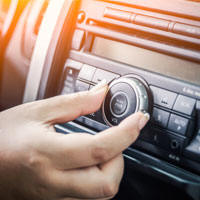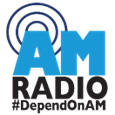
 |
| Absolutely Mandatory |
| FCC Chairman Brendan Carr: "AM radio is the lynchpin of emergency response. " |
| WASHINGTON, DC: Maybe this time? The bipartisan “AM in Every Vehicle Act” that nearly crossed the finish line in December has found new legs in a new Congress. The bill stands poised to move to a full vote in the Senate and has just been reintroduced in the House. Sponsors Ted Cruz and Ed Markey stated, “the AM Radio for Every Vehicle Act broadcasts a clear message to car manufacturers that AM radio is an essential communication tool for millions of Americans across the country.” The sponsors’ statement more than implies that automakers have been cheering for the bill’s defeat. The legislation prescribes fines if they don’t comply and requires them to keep the service free of charge. Two years ago certain manufacturers had begun removing AM reception from dashboards, saying it was incompatible with Electric Vehicle (EV) design. Then they were forced to backtrack, admitting that previous EVs they had marketed had perfectly good AM reception. One high-profile US car manufacturer reluctantly reinitialized the service on vehicles that had been sold without it.  Recent opposition has also come from the Consumer Electronics Association (CEA), which has threatened broadcasters with introduction of a bill to require performance royalties should the AM legislation pass. Most understand that threat to be idle. Public safety undergirds the very infrastructure that makes the marketing of modern electronics possible. Meanwhile, support has been announced by a consortium of former New York Police Department chiefs and the American Association of Retired People (AARP).. Especially after the Los Angeles fires, it is undeniable that digital electronics cannot be relied upon in all cases to warn the public when it really counts. (See "Communications are a nightmare!" The Source, Jan 2025.) Stories of the wild unpredictability of text warnings filled the news. In the words of Maria Cantwell (D-WA), ranking member on the Senate Commerce Committee that advanced the bill: "I like the notion that we are going to have good, old-fashioned AM radio and car radios and not just respond to some of the requests by people who think that the digital solution is just the only solution.” Not surprising, on January 8, the day the fires ignited, all of the Los Angeles all-news radio stations saw a jump in their number of listeners by a factor of 2 or 3, according to the Nielsen audience rating service. “Social media provided timely updates but also saw instances of misinformation creating confusion. Faced with this challenge, audiences turned to local media for fact-checked, reliable updates,” Nielsen says. Adding optimism: the incoming FCC Chairman Brendan Carr is enthusiastic in support of the AM bill’s passage. “Just last week I visited parts of North Carolina...hit hard by Hurricane Helene and I heard firsthand the stories of people that only could access lifesaving information in the days following the storm by tuning their radios to the AM band,” stated Carr. “By ensuring that AM radios remain in new vehicles, this legislation will help keep this lynchpin of our emergency response system in place.”
|
PO Box 51, Zeeland, Michigan, USA, 49464-0051, Phone 616.772.2300, Email
• • •